31 May 2022
Bovine respiratory disease – re-engaging an old challenge

Smoke bombs can be used to demonstrate problems with ventilation in sheds.
Bovine respiratory disease (BRD) is a complex syndrome caused by multiple factors, including environmental and management-related stressors, and a long list of viral and bacterial pathogens. In combination, these factors overwhelm and dysregulate host immunity, and lead to disease.
The financial costs and negative impacts of BRD, in both the dairy and beef sectors, are well documented; Bartram et al (2017) estimated the lifetime economic cost of a case of BRD in a dairy heifer to be £772, and 2019 data from abattoirs across England and Wales identified evidence of pneumonia/pleurisy in nearly 5% of postmortem carcase inspections.
In their recent systematic review and meta-analysis, Buczinski et al (2021) concluded that heifers diagnosed with BRD during their calfhood have 2.85 times higher odds of dying (95% confidence interval 1.22 to 6.69; CI) and 2.30 times higher odds of herd removal before the first calving (95% CI: 1.75 to 3.03) compared with heifers not diagnosed with this condition.
Heifers experiencing calfhood BRD also had an average daily liveweight gain reduced by 0.067kg/d (95% CI: -0.099 to -0.034) and they produced 121.2kg (95% CI: -184.9 to -57.5) less milk during their first lactation.
These findings really demonstrate the significant impact respiratory disease can have on the long-term performance of cattle, and highlight the opportunities offered in terms of improving a farm’s efficiency by preventing the disease.
Such improvement in efficiency is particularly desirable when considering the sustainability of any farming system, as well as representing a significant reduction in the cost of production, which is increasingly under focus given the rising costs across all sectors.
Despite a significant body of research and clear advances in treatments, detection technologies and preventives, a significant change has not been observed in the morbidity attributed to BRD in the past 45 years (Smith et al, 2020). In the British Cattle Health and Welfare Group’s 2020 report, pneumonia remains in the top four health and welfare challenges facing the beef industry.
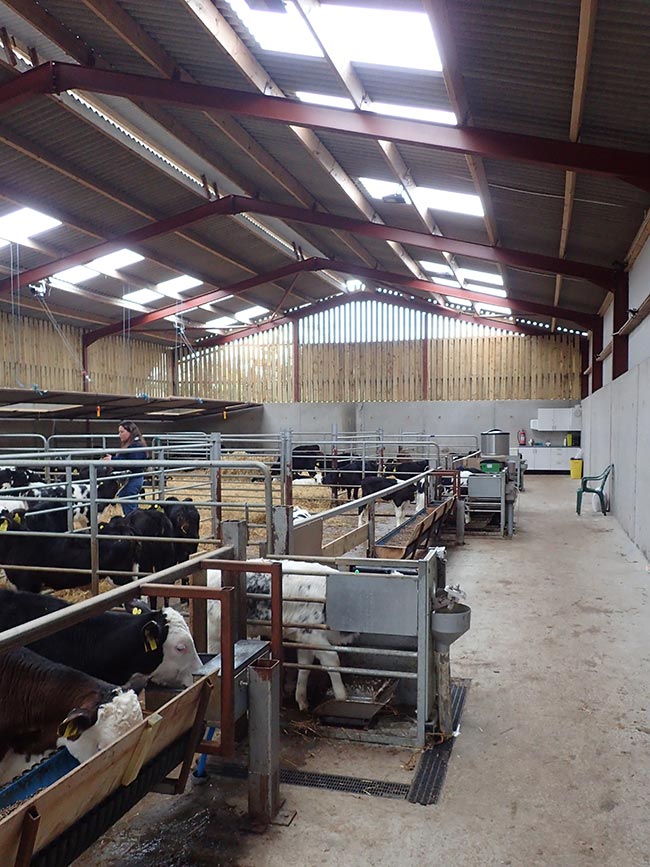
Addressing the challenge
So, how do we address this continued challenge?
Unfortunately, we are still in the situation where veterinary involvement in the management of BRD is often limited to reactive management of disease outbreaks.
More than 50 antimicrobial products are licensed for the treatment of BRD in the UK, and so while we have the tools available to manage a disease outbreak, all too often by the time we get involved, the damage has already been done.
It is, therefore, important we endeavour to work with our clients to move to a more proactive approach to BRD control, with the focus on prevention rather than treatment.
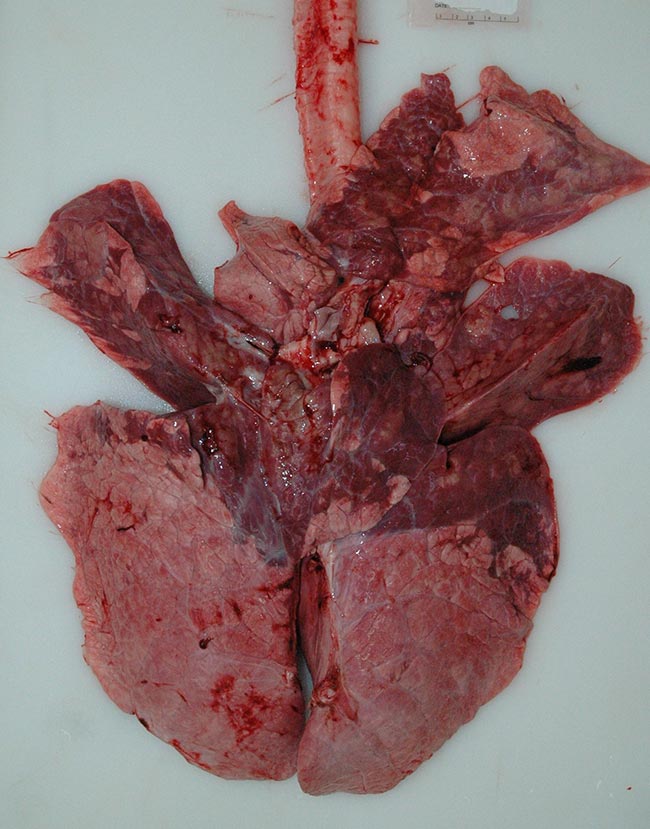
Engagement opportunities
The first challenge is often having the opportunity to properly engage with our clients on disease prevention.
Timing is key; in the midst of an outbreak, clients are going to be focused on the resolution of the disease challenge in front of them, and while at this time they may acknowledge the need to take steps to prevent future outbreaks, they will be primarily focused on minimising mortality and further cases.
It is often more effective to separate conversations, getting the initial outbreak controlled and then moving on to discussions about how to prevent future challenges.
This is a good reason for that follow up phone call or visit after the initial call-out; alternatively, it may form part of the discussions during a separate health planning or performance review visit.
The annual antimicrobial collation and review required for farm assurance offers another great opportunity to review pneumonia issues, and discuss opportunities for implementing proactive preventive measures.
As we strive to further reduce the use of antimicrobials on farm, the use of vaccination in the management of BRD is an area of particular focus with widespread initiatives aiming at increasing vaccine uptake within the industry.
We are privileged to have several different vaccines available to us; however, market penetration is not as high as it could be.
It is important we work with our clients to overcome the perceived barriers to vaccination, such as cost and previous problems with vaccines, and provide evidence of why vaccination is justified and will bring true benefit to their herd.
When considering vaccine programmes, it is important we look at the specific set of disease challenges and risk factors present on each farm. No “one size fits all” programme exists for BRD.
The complex nature of BRD means no single practice exists for reducing the effect of this disease and, in fact, addressing one factor on its own will often lead to poor results. For example, simply introducing a vaccination programme for a group of animals kept in sheds that are poorly ventilated and unfit for purpose is unlikely to resolve a BRD issue, and lead to frustration.
Environment
The issue of suboptimal environments on farm is one of the priorities of the Animal Health and Welfare Pathway, being launched this year in England.
The Animal Health and Welfare Pathway is the Government’s new initiative designed to push forward, and support the gradual and continual improvement in farm animal health and welfare in England.
As part of this initiative, a number of funding programmes are available. The first offers farmers funding for an annual visit from their vet to consider the health and welfare of their animals. This includes carrying out diagnostic testing, reviewing biosecurity and the use of medicines, and providing bespoke advice on actions and available support to improve the health and welfare of their animals. Such a visit offers an ideal opportunity to implement proactive control measures for BRD, and discuss things such as vaccine programmes and building improvements.
Following on from the annual health and welfare review, farmers will be able to apply for grants to co-fund capital investments to support the delivery of the published health and welfare priorities. This will include grants for bespoke infrastructure projects, such as new housing and building upgrades. The farmer will need to agree with their vet on the most appropriate investments for their farm and animals.
Ventilation
It is normally possible to make alterations to buildings to improve ventilation, but it is important to understand what you are trying to achieve and do not underestimate the potential work involved. Remember, it is always going to be easier to undertake work on sheds when they are empty – for example, during the summer months – so having discussions well in advance of the housed period will maximise the likelihood of the changes being made.
Good ventilation is essential to prevent BRD in housed animals. Respiratory pathogens will not survive for long once exhaled by the animal when ventilation is effective.
However, in a poorly ventilated environment, pathogens can survive for relatively long periods, forming a significant disease reservoir and increasing the likelihood of disease spread across a group.
Adequate ventilation should ensure sufficient fresh air is coming into the building to replace the warm damp air exhaled by the animals. The aim is for the air to be completely changed every six minutes at a minimum.
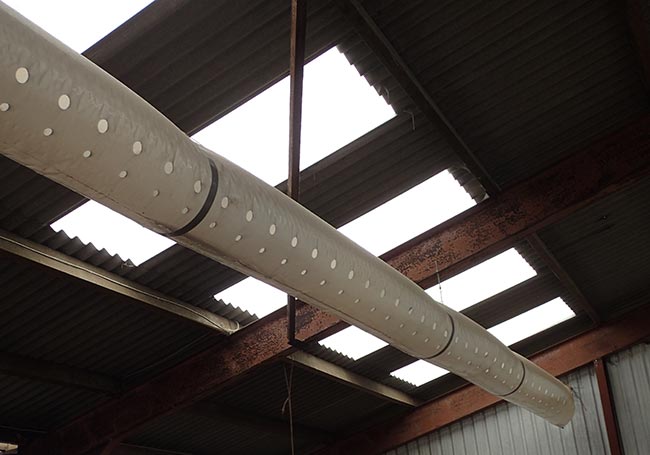
Most sheds rely on “natural” ventilation with the wind causing a difference in air pressure inside and outside the building, as well as the “stack effect”, where heat generated by the animals rises and escapes near the top of the building (for example, from the ridge), and, in turn, this draws fresh air in lower down.
Smoke pellets (available from plumbers’ merchants) can help identify issues with airflow and are a very visual way for helping engage with clients on the topic of ventilation. The aim is for smoke to clear completely in two to three minutes and it should not linger in corners.
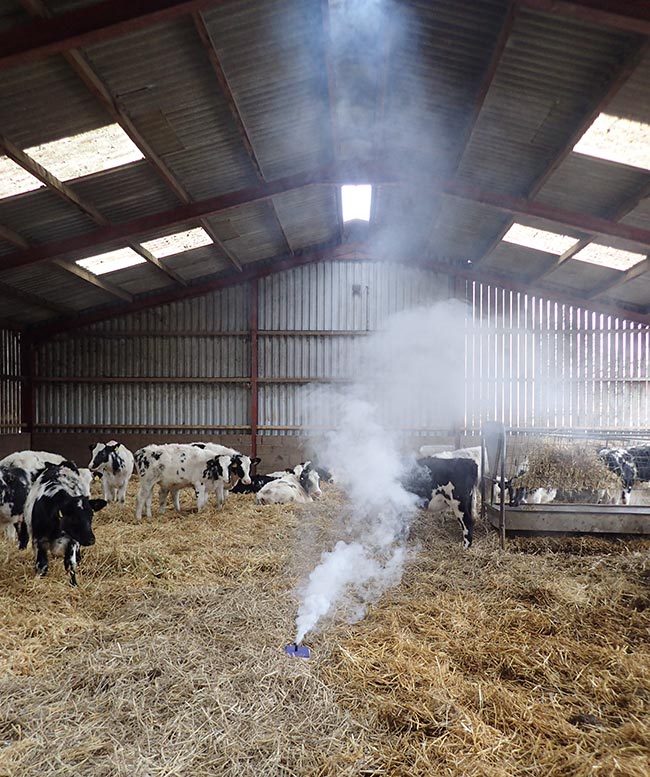
Poor ventilation in existing facilities is usually because inlets and/or outlets are absent, or too small.
It is, unfortunately, still commonplace to find new cattle sheds being erected with cranked ridges, even though these often only offer around 20% of the required outlet. It is beyond the scope of this article to provide a detailed overview of the calculations needed to understand the inlet and outlet requirement of any given shed, but numerous good resources are available, such as the Agriculture and Horticulture Development Board’s better cattle housing design building, which is available to download from their website. The output from calculations will enable you to make constructive recommendations on how to improve existing sheds or assess plans for new sheds.
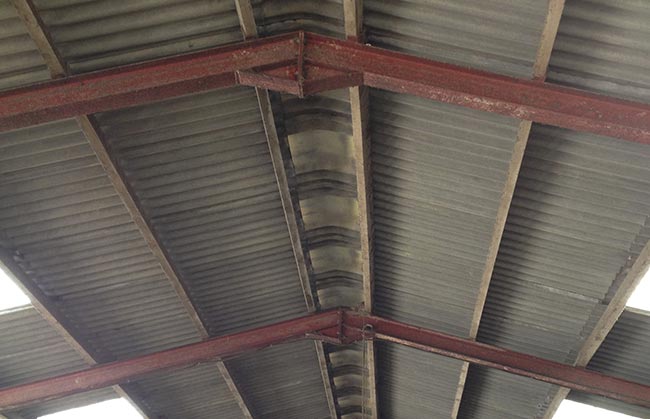
Other factors
Don’t forget the impact of stocking density on how a shed performs. Overstocking and understocking will have a significant impact on the stack effect and ventilation requirements, so always ensure your recommendations are for an agreed number of cattle of a specified weight.
Other things to consider when assessing the environment include examining the moisture management. The aim should be to reduce humidity by minimising moisture being added to the sheds.
Common problems to look out for include poor drainage, leaking water troughs or poorly maintained gutters.
Conclusion
BRD remains a significant challenge on beef and dairy farms. If we are to make significant improvements to the management of this disease, it is essential we work with our clients to move from a reactive approach to the disease to one where the focus is on prevention.
Utilising the opportunities offered by the annual medicines and performance reviews, and the new Animal Health and Welfare Pathway, should enable us to bring about actual change on farm – especially if they are focused on key areas, such as improving the environment cattle are housed in.
- Vet Times (2022), Volume 52, Issue 6, Pages 6-10.
References
- Buczinski S et al (2021). Effects of calfhood respiratory disease on health and performance of dairy cattle: a systematic review and meta-analysis, J Dairy Sci 104(7): 8,214-8,227.
- Bartram et al (2017). Estimating the lifetime total economic costs of respiratory disease in beef and dairy calves in the UK, Value in Health 20: A399-A811.
- Smith RA et al (2020). Bovine respiratory disease: looking back and looking forward, what do we see? Vet Clin North Am Food Anim Pract 36(2): 239-251.
